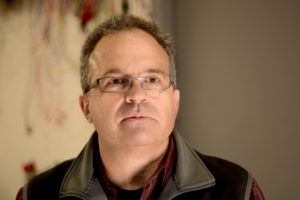It is no secret that hydraulic systems are known for their powerful, positive motion control.

Carl Dyke, founder CD Industrial Group
And unlike early iterations of hydraulic machines – which offered blunt force using an “all-or-nothing” control system – modern requirements call for very fine motions, repeated, precise positions and smooth acceleration, all while using as little input energy as possible.
The problem? This leads to significant design challenges. It also calls for solutions involving the use of complex electronics to measure system values – such as position and pressure – and promptly respond with both logic and varying amounts of current.
Manufacturers today carry the burden of designing and building robust hydraulic systems to meet modern requirements, while technicians are tasked with not only zeroing in on a fault in an efficient manner, but also trying to educate all users on the need for clean, well maintained, particle free hydraulic fluid.
Modern hydraulic valve components demand a level of cleanliness not required in years past. For many mobile machines today, the direct lever-operated, proportional, directional valve that allows for the lifting and lowering of the boom with feathered speed control has been replaced by proportional valve spools moved by varying amounts of pilot pressure applied to the spool end. In making the switch to these electro-hydraulic directional valves, the operator cabin is made cleaner and safer.
With valves mounted outside the cabin, operator levers are changed to electrical input devices. The input devices are not wired directly to the valves, but rather to an electronic control module (ECM). The ECM can then compare the incoming operator request against program logic, designed to provide safety and make sure the machine is not pushed beyond limits.
The ECM can also be used for automated control of hydraulic valves where inputs from an operator lever is not necessary. sophisticated sensor suite, together with GPS technology, works with an electronic controller to steer the machine more accurately than an operator with his hands on the wheel. It is the ECM that provides the final driving signal to the electro-hydraulic steering valves.
The knowledge set for system diagnosis includes the control systems and its layers and also the final devices and valves that actually cause motion to occur. It’s about knowing how and where to measure an electrical/electronic parameter versus a hydraulic fluid pressure or flow rate, and where in a multi-layered control system the communication of signals may have ceased or drifted away from normal values.
There is no shortage of opportunities for technicians to learn skills needed to work with electro-hydraulic systems. Whether it’s through college programs, organizational training programs, conferences and seminars, or online learning programs, technicians can eventually acquire all of the pieces of the educational puzzle to ensure long-term professional success.
This article was contributed by Carl Dyke, founder of CD Industrial Group Inc. (CDIG). Dyke will present at the upcoming International Fluid Power Exhibition (IFPE). For more information on IFPE 2020, visit www.ifpe.com.
Filed Under: Mobile Hydraulic Tips